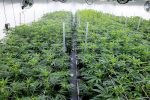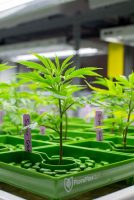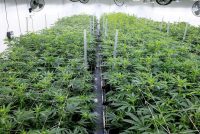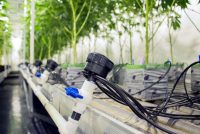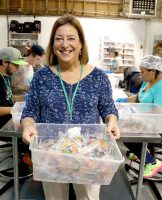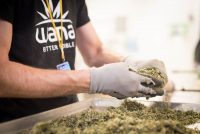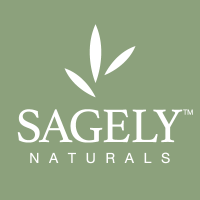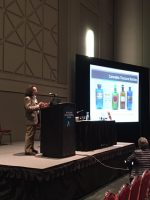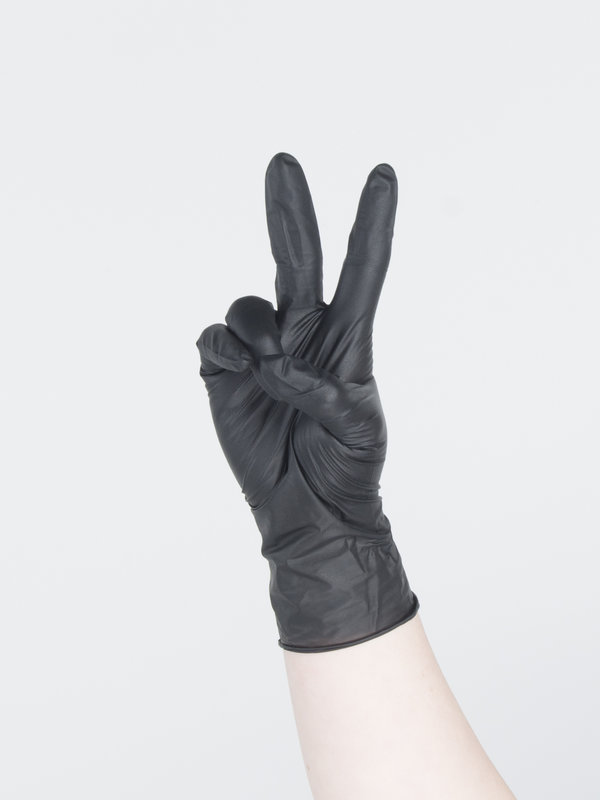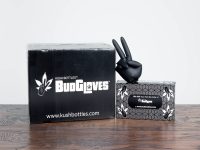Steve Stadlmann has an extensive background as an analytical chemist working in laboratories since the early 90’s. He is now a sales specialist at PerkinElmer, an analytical instrument manufacturer that provides instruments for cannabis testing labs, in addition to a host of other industries. With over two decades of experience working in environmental testing labs, food and beverage labs and agricultural testing labs, Stadlmann is extremely familiar with the instruments used in cannabis labs.

In 2014, he started working in the cannabis space with TriQ, Inc., a technology solutions provider for cannabis growers, where he worked in product development on a line of nutrients. In April of 2016, he started working at Juniper Analytics, a cannabis-testing laboratory in Bend, Oregon. As laboratory director there, he created their quality manual, quality assurance plan, SOP’s and all the technical documentation for ORELAP accreditation. He developed new methodologies for cannabis testing industry for residual solvents, terpene profiles and potency analysis. He worked with PerkinElmer on pesticide methodology for the QSight™ Triple Quadrupole LC/MS/MS system and implemented operational procedures and methods for LC-UV, GCMS and LC-MS/MS, including sample prep for cannabis products.
He left Juniper Analytics about two months ago to work with PerkinElmer as a sales specialist. With extensive experience in helping get Juniper’s lab accredited, he is a wealth of knowledge on all things cannabis laboratory accreditation. PerkinElmer will be hosting a free webinar on September 12th that takes a deep dive into all things cannabis lab accreditation. Ahead of the upcoming webinar, Getting Accreditation in the Cannabis Industry, we sit down with Stadlmann to hear his observations on what instruments he recommends for accreditation, and processes and procedures to support that. Take a look at our conversation below to get a glimpse into what this webinar will discuss.
CannabisIndustryJournal: How can cannabis labs prepare for accreditation with selecting instrumentation?
Steve: Finding the appropriate instrumentation for the regulations is crucial. Ensuring the instrumentation not only has the capabilities of analyzing all the required compounds, but also able to achieve appropriate detection limit requirements. In addition, having an instrument manufacturer as a partner, that is willing and able to assist in method development, implementation and continued changes to the testing requirements at the state level (and potentially national level) is key.
Another consideration is robustness of the equipment. The instrumentation must be capable of high throughput for fast turnaround times of results. Unlike the environmental industry, the cannabis industry has consumer products with expiration dates. Clients demand quick turnaround of results to get product to market as quickly as possible and avoid sitting on inventory for any length of time.
To add to the robustness need, sample matrices in the cannabis industry can be quite challenging in relation to analytical instrumentation. Equipment that is able to handle these matrices with minimal downtime for routine service is becoming a requirement to maintain throughput needs of the industry.
CIJ: What are the most crucial procedures and practices for achieving ISO 17025 accreditation?
Steve: Development and documentation of processes and procedures following Good Laboratory Practices and procedures is essential to a successful accreditation process. Great attention must be paid to the quality objectives of the laboratory as well as associated documentation, including tracking of any errors, deviations, updates, complaints, etc.
Data integrity is a key component to any accrediting body and includes implementation and/or development of appropriate methods with support data proving acceptable results. In addition, documentation of all procedures and processes along with tracking of all steps in the process during routine laboratory work should be a priority. The ability to show a complete, documented trail of all procedures done to any sample is important in ensuring the results can be reproduced and ensuring no deviations occurred, in turn potentially causing questionable results.
Last but not least: training. Laboratory staff should be well versed in any procedures they are involved in to ensure high data quality and integrity. If any laboratory staff does not receive appropriate training in any operating procedures, the data quality becomes suspect.
CIJ: What are some of the biggest obstacles or pitfalls cannabis labs face when trying to get accredited?
Steve: Not fully preparing to meet any agency and testing regulations and requirements will cause delays in the accreditation process and potentially more work for the laboratory. From documentation to daily operations, if any aspect becomes a major finding for an auditor, additional data is usually required to prove the error has been fixed satisfactorily.
Taking the time early on to ensure all documentation, processes and procedures are adhering to any regulatory agency requirements is important for a smooth accreditation process. It is easy to overlook small details when building out the operating procedures that might be essential in the process. Again, going back to data quality, the laboratory must ensure all steps are outlined and documented to ensure high quality (reproducible) data and integrity.
A new employee should be able to come in and read a quality manual and standard operating procedure and produce equivalent data to any laboratory analyst doing the same job. With difficult or challenging operating procedures it becomes even more important that training and documentation are adhered to.
PerkinElmer’s free webinar will dive into these points and others in more detail. To learn more and sign up, click here.








